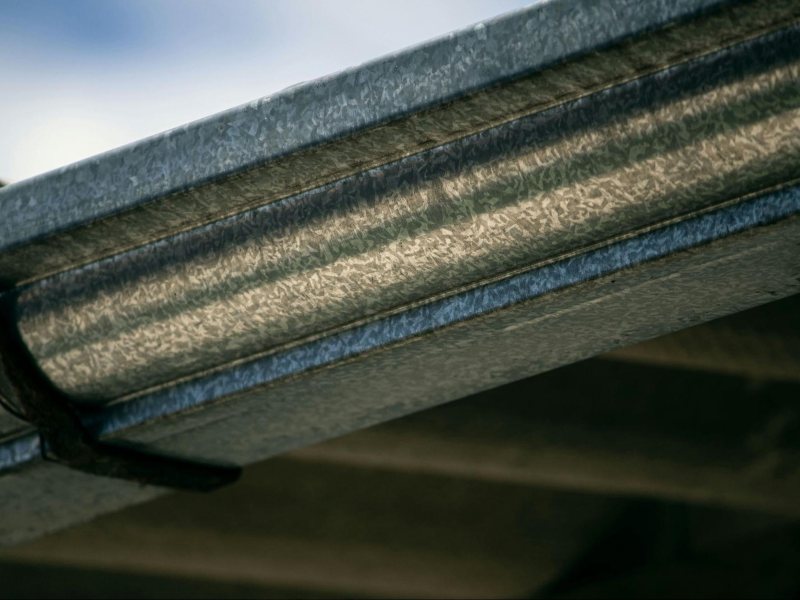Gutter guards are an essential addition to any home’s gutter system, as they help prevent clogs and blockages caused by debris such as leaves, twigs, and dirt. Installing gutter guards not only saves you the hassle of frequently cleaning your gutters but also protects your home’s foundation and prevents water damage to your property. However, before installing gutter guards, it’s crucial to prepare your gutters properly to ensure a seamless installation process and optimal performance. Here’s a comprehensive guide on how to prepare your gutters for gutter guard installation:
Clean Your Gutters Thoroughly
Before installing gutter guards, it’s essential to clean your gutters thoroughly to remove any existing debris and build-up. Start by removing large debris such as leaves, twigs, and branches by hand or with a scoop. Then, use a garden hose to flush out smaller debris and dirt. Make sure to pay special attention to the downspouts and corners where debris tends to accumulate the most. Cleaning your gutters ensures that the gutter guards can be installed on a clean surface, maximizing their effectiveness.
Inspect Your Gutters for Damage
While cleaning your gutters, take the opportunity to inspect them for any signs of damage or deterioration. Look for cracks, holes, rust spots, or loose connections that may need repair before installing gutter guards. Addressing any issues beforehand will ensure that your gutter system is in good condition and can properly support the gutter guards.
Measure Your Gutters
Before purchasing gutter guards, accurately measure the length and width of your gutters to determine how many guards you’ll need and their appropriate size. Gutter guards come in various sizes and styles, so make sure to choose ones that fit your gutters perfectly. Measure each section of your gutters individually, including straight runs, corners, and downspouts, to ensure precise measurements.
Choose the Right Type of Gutter Guards
There are different types of gutter guards available on the market, including mesh guards, screen guards, foam guards, and brush guards. Each type has its advantages and disadvantages, so it’s essential to choose the right one based on your specific needs and budget. Our pals at Gutter Pros also express the factors to consider when installing your new gutter guard. These factors include the level of debris in your area, ease of installation, durability, and maintenance requirements when selecting gutter guards.
Gather the Necessary Tools and Materials
Before starting the installation process, make sure you have all the necessary tools and materials on hand. Typical tools needed for gutter guard installation include a ladder, drill, screws, measuring tape, hacksaw or tin snips, and safety equipment such as gloves and goggles. Additionally, gather the gutter guards themselves and any additional accessories or fasteners required for installation.
Follow Manufacturer Instructions
Once you’ve gathered all the necessary tools and materials, carefully read the manufacturer’s instructions provided with the gutter guards. Different brands and types of gutter guards may have specific installation guidelines, so it’s essential to follow them closely to ensure proper installation. Pay attention to any recommended installation techniques, spacing requirements, and safety precautions outlined in the instructions.
Install Gutter Guards Correctly
With your gutters cleaned, inspected, and measured, and all tools and materials ready, you’re now ready to install the gutter guards. Follow these general steps for proper installation:
- Start at one end of the gutter and work your way down, securing the gutter guards in place according to the manufacturer’s instructions.
- Trim the gutter guards to fit the length of each gutter section using a hacksaw or tin snips if necessary.
- Secure the gutter guards to the gutter using screws or other fasteners as specified by the manufacturer. Make sure the guards are snugly fit and securely attached to prevent them from coming loose over time.
- Repeat the installation process for each section of the gutter, ensuring that the guards are installed evenly and securely along the entire length.
Test Your Gutter Guards
Once the gutter guards are installed, test them to ensure they are functioning correctly. Run water through your gutters using a garden hose to simulate rainfall and check for any leaks, blockages, or overflow. Make any necessary adjustments or repairs to ensure that the gutter guards are effectively diverting water away from your home’s foundation and preventing debris from entering the gutters.
Maintain Your Gutter Guards Regularly
After installing gutter guards, it’s essential to maintain them regularly to ensure they continue to perform effectively. While gutter guards reduce the frequency of gutter cleaning, they still require occasional maintenance to remove any accumulated debris and ensure proper water flow. Inspect your gutter guards periodically and remove any debris or buildup using a brush or hose. Additionally, trim any overhanging branches or vegetation that could potentially clog the gutters.
Conclusion
Preparing your gutters for gutter guard installation is a crucial step in maintaining a functional and efficient gutter system. By cleaning your gutters thoroughly, inspecting them for damage, choosing the right type of gutter guards, and following proper installation techniques, you can ensure that your gutter guards provide optimal protection against debris and prevent clogs and blockages. With regular maintenance and care, your gutter guards will help safeguard your home’s foundation and prevent costly water damage for years to come.







